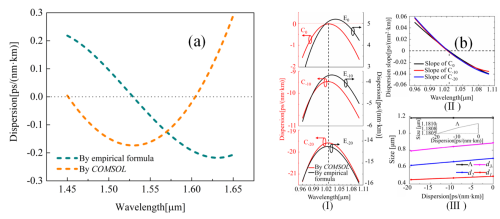Recently, a research team from Shanghai Institute of Optics and Fine Mechanics (SIOM), Chinese Academy of Sciences (CAS), proposed a novel inverse computer-aided optical fiber design to achieve any special fiber dispersions which finds application in nonlinear fiber optics, novel fiber laser and optical telecommunication. The results have been accepted for publication in a future issue of journal Journal of Lightwave Technology.
Photonic-crystal fiber (PCF) is known for remarkable dispersion tailoring properties with applications successfully demonstrated. In this research, scientists proposed a new concept of equivalent-graded-index photonic-crystal fiber (EGI-PCF), which is regarded as a modified PCF. By adding extra freedom to the fiber structure, it provides more flexibility for the control of fiber dispersion.
Due to a massive space of multiple fiber design parameters, researchers applied the differential genetic algorithm to the automatic computer-aided fiber design (CAFD) of EGI-PCF. To speed up the convergence of calculation, the empirical formula of EGI-PCF was used to replace the real-time FEM simulation.
The researchers demonstrated a successful reduction of run time of CAFD program by at least three orders of magnitude. It took a laptop a few seconds to design an ultra-flattened dispersion over the S + C+ L band whereas the traditional method using FEM simulation costed over three days usually. A dispersion-decreasing fiber (DDF) with a symmetric dispersion around 1μm for the self-similar pulse evolution in a fiber laser/amplifier design was also proposed by using this new method.
The research was partly supported by the International Science and Technology Cooperation Program, the National Natural Science Foundation of China, and the Key Research Program of Frontier Sciences CAS.

Fig. 1. (a) A quarter of EGI-PCF schematic. (b) Group dispersion calculated by empirical formula and COMSOL as a function of wavelength with Λ=3.5μm. (Image by SIOM)

Fig. 2. (a) Group dispersions of the designed fiber in S+C+L band. (b) Partial simulation results of the DDF. (Image by SIOM)
Article website:
https://doi.org/10.1109/JLT.2021.3089176
Contact:
WU Xiufeng
General Administrative Office
Shanghai Institute of Optics and Fine Mechanics, CAS
Email: xfwu@siom.ac.cn
Web: http://english.siom.cas.cn/